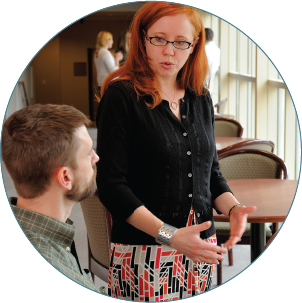Financing Capital Projects—Part II: Special Levies
Published for Community and Economic Development (CED) on January 29, 2013.
Blight City has fallen on hard times. Its population has declined significantly since the 1990s, due in large part to the shuttering of two large manufacturing plants. Emblematic of the city’s decline is its central downtown area. Once a vibrant community center, it is now comprised mainly of run-down, vacant buildings. Recently, however, a mid-sized micro-brewed root beer company purchased one of the old manufacturing plants (located just outside the city’s downtown) and began operations. It employs 200 people and plans to double its workforce over the next two years. The company wants to capitalize on a recent resurgence in root beer “connoisseurs” by expanding the plant to include a tasting facility. And the company has expressed interest in opening a restaurant and root beer bar in the city’s downtown. City leaders want to support the company’s efforts. They view the company’s investment in the city as a cornerstone for the city’s resurgence.
In fact, the root beer company’s recent investment in the city has sparked the interest of at least one developer. She has approached city officials about plans to help revitalize downtown. The developer intends to purchase several of the vacant buildings and refurbish them to attract a mix of small commercial entities, restaurants, bars, and residential tenants. Both the root beer company and the developer have requested (among other incentives) that the city invest in some infrastructure improvements and upgrades in the central downtown area to complement the private development. Specifically, the private entities would like the city to make road improvements, widen the sidewalks, install street lights, upgrade water and sewer lines, and demolish a city-owned structure to construct a parking lot.
Assuming that the city councilmembers are willing to make these public infrastructure investments, there are several available funding options, which fall into five general categories: (1) Current Revenues; (2) Savings; (3) Grants/Donations/Partnerships; (4) Special Levies; and (5) Borrowing Money. This is the second in a series of posts discussing these funding options. It focuses on “Special Levies”—describing two potential mechanisms whereby a unit may raise money from the property owners who most directly benefit from the capital project(s) financed with the raised funds.
Targeted Revenue Generation
The largest source of general fund revenue for both counties and municipalities is property tax proceeds. And the hallmark of property taxation is that all property owners (except those whose property is statutorily exempt) pay the tax(es), regardless of whether they directly benefit from the projects or services funded with the tax proceeds. Citizens entrust their local elected leaders to expend the proceeds for the general benefit of the community. Local elected leaders, however, often feel pressure to provide and fund an ever-increasing number of projects and services while, at the same time, maintaining or reducing the property tax levy. Because of this, units have come to rely on revenue generation mechanisms, such as user charges, that are targeted to the citizens or property owners who most directly benefit from specific services or projects. For example, in the past many municipalities funded solid waste services, including disposal facilities, convenience centers, and even curb-side pick-up, with property tax proceeds. Now these units typically assess user charges to cover some or all of the costs associated with these services. Other common user charges levied by counties and municipalities are for water and wastewater utilities services, recreational and cultural activities, health and mental health services, ambulance services, parking, public transportation, stormwater, cemeteries, and airports. Units also rely on fee revenue to fund certain regulatory activities such as inspections and plan reviews. Generally user charges are feasible for any service that directly benefits individual “users,” is divisible into service units, and can be collected at a reasonable cost.
What about using user charges to fund capital projects or acquisitions? It is harder to divide most capital projects or assets into divisible units with defined beneficiaries. Most units attempt to apportion some of the capital costs associated with a particular service among the users of that service. The law allows for more targeted revenue generation through special levies—special assessments and service (tax) districts—to fund capital projects or capital assets.
Special Assessments
A special assessment is levied against property to pay for public improvements that benefit that property. It is neither a user charge nor a tax but it has characteristics of both. Like a user charge, a special assessment is levied in some proportion to the benefit received by the assessed property. However, like a property tax, it is levied against property rather than persons and is a lien on each parcel of real property that is assessed. The lien may be foreclosed in the same manner as the foreclosure of property tax liens.
Local governments currently have two statutorily authorized methods to levy special assessments. The following chart summarizes the major characteristics of each method. For a detailed exposition of the authority, procedures, and limitations of each method click here.
Benefits and Limitations of Traditional Assessment Method
The traditional assessment method provides local units with a potentially important tool for funding capital projects. The ability to recoup some or all of the costs of a particular project from those property owners who most directly benefit from the project makes sense both financially and politically. Levying assessments also allows a local government to collect revenue from property owners who benefit from the capital projects but whose properties are exempt from property taxation. And using special assessments as a part of its revenue mix allows a governing board to direct property tax proceeds and other general fund revenues to services or to capital projects that benefit a broader subset of the unit’s citizens.
Special assessments are not widely used by North Carolina local governments, though. This is due to a number of factors. For one, the process for levying assessments is onerous. (Click here for a detailed description of the assessment process.) Furthermore, the traditional assessment authority is limited to only a few categories of projects. Counties may levy special assessments to finance the following public improvements:
|
Traditional Special Assessment Method G.S. 160A, Art. 10; G.S. 153A, Art. 9 |
Newer Special Assessment Method G.S. 160A, Art. 10A; G.S. 153A, Art. 9A |
|
|
|
|
|
|
|
|
|
|
|
|
|
|
|
- Water systems
- Sewage collection and disposal
- Beach erosion control and flood and hurricane protection
- Watershed improvement, drainage, and water resources development projects
- Local cost of improvements made by the Department of Transportation to subdivision and residential streets outside municipalities
- Street light maintenance
- Streets
- Sidewalks
- Water systems
- Sewage collection and disposal systems
- Storm sewer and drainage systems
- Beach erosion control and flood and hurricane protection
- Beach erosion and flood and hurricane protection
- Fire protection
- Recreation
- Sewage collection and disposal
- Solid waste collection and disposal
- Water supply and distribution
- Ambulance and rescue services
- Watershed improvement, drainage, and water resources development
- Cemeteries
- Beach erosion and flood and hurricane protection
- Downtown revitalization projects
- Urban area revitalization projects
- Transit-oriented development projects
- Drainage projects
- Sewage collection and disposal systems
- Off-street parking facilities
- Watershed improvement, drainage, and water resources development projects
Public Officials - Local and State Government Roles
Topics - Local and State Government



